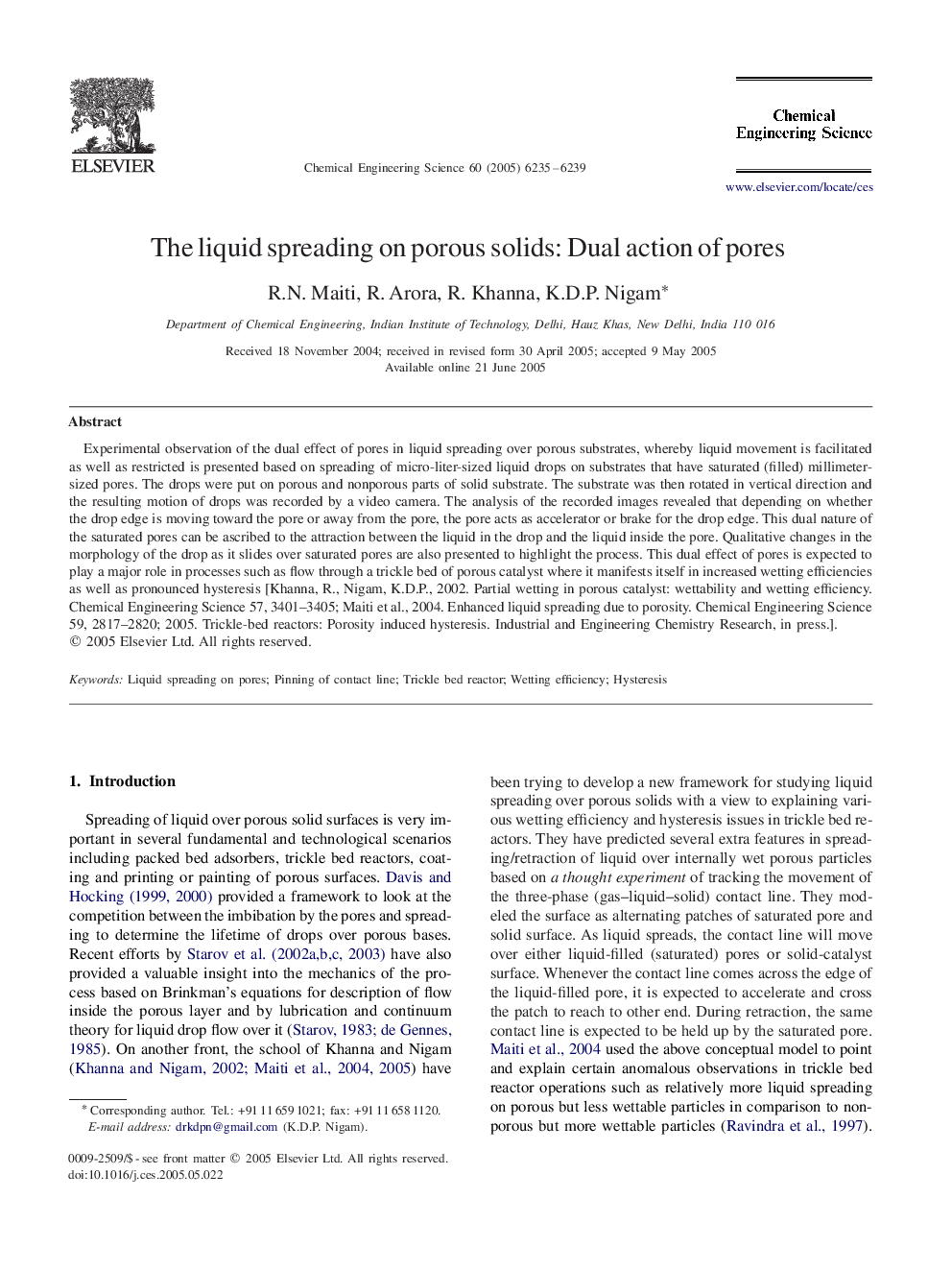| Article ID | Journal | Published Year | Pages | File Type |
|---|---|---|---|---|
| 159257 | Chemical Engineering Science | 2005 | 5 Pages |
Experimental observation of the dual effect of pores in liquid spreading over porous substrates, whereby liquid movement is facilitated as well as restricted is presented based on spreading of micro-liter-sized liquid drops on substrates that have saturated (filled) millimeter-sized pores. The drops were put on porous and nonporous parts of solid substrate. The substrate was then rotated in vertical direction and the resulting motion of drops was recorded by a video camera. The analysis of the recorded images revealed that depending on whether the drop edge is moving toward the pore or away from the pore, the pore acts as accelerator or brake for the drop edge. This dual nature of the saturated pores can be ascribed to the attraction between the liquid in the drop and the liquid inside the pore. Qualitative changes in the morphology of the drop as it slides over saturated pores are also presented to highlight the process. This dual effect of pores is expected to play a major role in processes such as flow through a trickle bed of porous catalyst where it manifests itself in increased wetting efficiencies as well as pronounced hysteresis [Khanna, R., Nigam, K.D.P., 2002. Partial wetting in porous catalyst: wettability and wetting efficiency. Chemical Engineering Science 57, 3401–3405; Maiti et al., 2004. Enhanced liquid spreading due to porosity. Chemical Engineering Science 59, 2817–2820; 2005. Trickle-bed reactors: Porosity induced hysteresis. Industrial and Engineering Chemistry Research, in press.].
